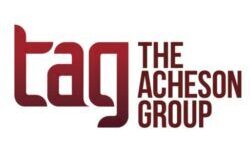
FDA has published its New Era of Smarter Food Safety Blueprint, originally intended for publication in March 2020; but, delayed due to the pandemic. According to FDA Commissioner Stephen Hahn, M.D., the blueprint has been “propelled” into more “concrete and essential action plans” through the agency’s experiences and lessons learned during the pandemic. Building on FSMA’s preventive approach, application of science- and risk-based standards, and flexible framework, the blueprint outlines the approaches FDA will take over the next decade to its four core elements: Tech-Enabled Traceability, Smarter Tools and Approaches for Prevention and Outbreak Response, New Business Models and Retail Modernization, and Food Safety Culture.
- Tech-Enabled Traceability. A key aspect of the blueprint is traceability with a strong emphasis on the application of technology to enable more effective approaches and processes to rapidly trace contaminated food to its source – in “minutes, not days, weeks, or even longer.” Having learned through the pandemic how such traceability enhances supply chain tracing for externally caused supply imbalances and shortages (i.e., the pandemic) as well as for foodborne illness outbreaks, the goal is to “explore ways to encourage companies” to adopt tracing technologies that harmonize efforts and support interoperability.
- While the FDA is specifically prohibited from requiring that the industry adopt specific technologies, the blueprint shows an inclination toward some technology frameworks – e.g., in its intent to: “Implement an internal digital technology system, such as blockchain, to receive critical tracking events and key data elements from industry and regulatory partners” and “Play a lead role in promoting and participating in governance and harmonization with U.S. and international regulatory counterparts through bodies such as GS1 and Codex,” Additionally, while the blueprint does not contain any legislation or even guidance, there are some indices toward expectations of such, i.e., FDA’s objective to “Explore ways for FDA to recognize the adoption of strong traceability systems in how we approach our food safety oversight activities (e.g., taking traceability into account in risk-based planning for inspections).
- Smarter Tools and Approaches for Prevention and Outbreak Response. Technology is also a key focus of this second core element, which focuses heavily on root cause analyses of outbreaks; predictive analytics through expanded use of artificial intelligence and machine learning tools; public-private sharing of “data trusts”; an evaluation of remote, virtual, and/or component inspections of both foreign and domestic firms; and numerous references to use of electronic systems for information submission and communication.
- New Business Models and Retail Modernization. With a primary focus on e-commerce and food delivery, this core element continues to carry the technology and predictive analytics themes – “encouraging” the use of technology that automatically monitors product risk, facilitating the safe development of new food ingredients and production technologies, and convening a new food business model summit to identify future courses of action to address potential food safety vulnerabilities. There was, however, some focus on the retail environment as well, such as facility and equipment design as preventive controls, enhancing training curricula, manager certification, and food handler education and training requirements, and advancing research related to strengthening retail food safety.
- Food Safety Culture. Stating that “A strong food safety culture is a prerequisite to effective food safety management,” FDA’s intent is to “foster, support and strengthen” food safety culture, and expand it beyond food facilities to farms and homes. The agency’s primary method of implementation would be that of promoting throughout the food system, within the agency, and to consumers. Even here, technology is seen as integral, as the agency would “Use new, tech-enabled popular mediums and tools, such as Smart Home devices, smartphones, digital platforms, and more to reach consumers with Smarter Food Safety messages.”
Overall the blueprint was just that, with a lot of “exploring,” “encouraging” and “enhancing” terminology but not, at least at this point, issuing any specific strategies, tactics, or guidance. It holds no real surprises for anyone who has been tracking with any of this, but does indicate directions FDA would like the industry to take, gives us some ideas of what FDA sees as critical to food safety for the next decade, and places a strong focus on traceability and the integration of technology and predictive analytics in all areas.






